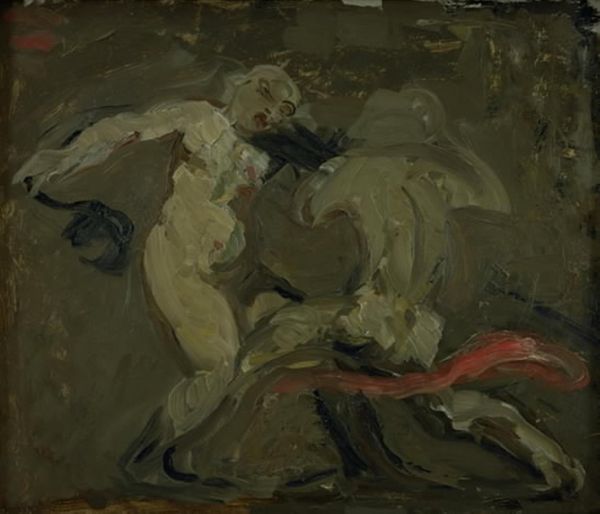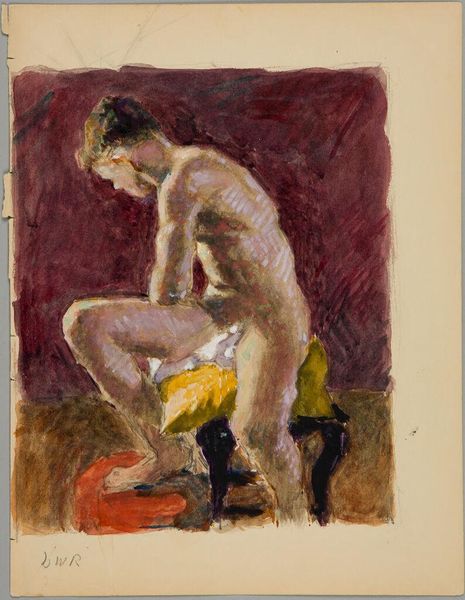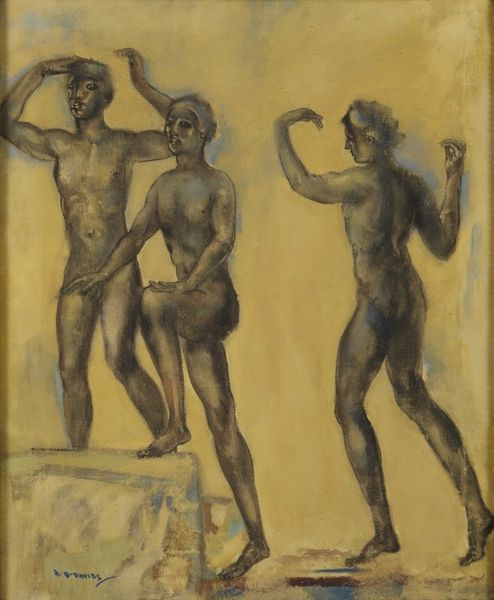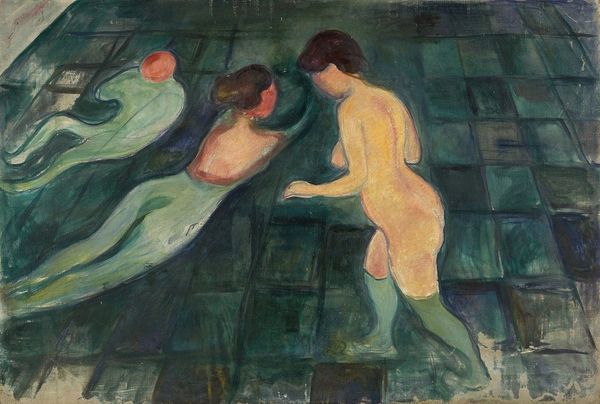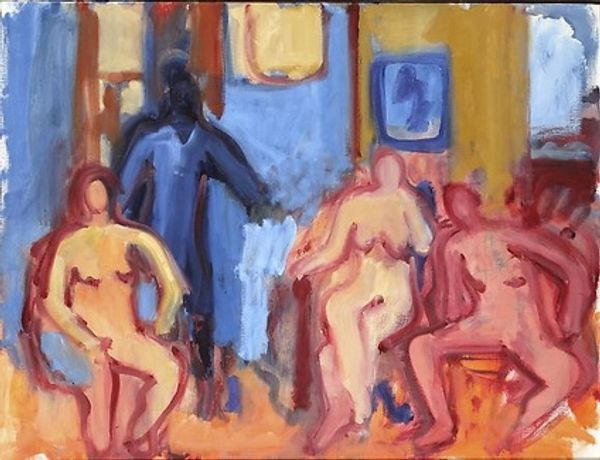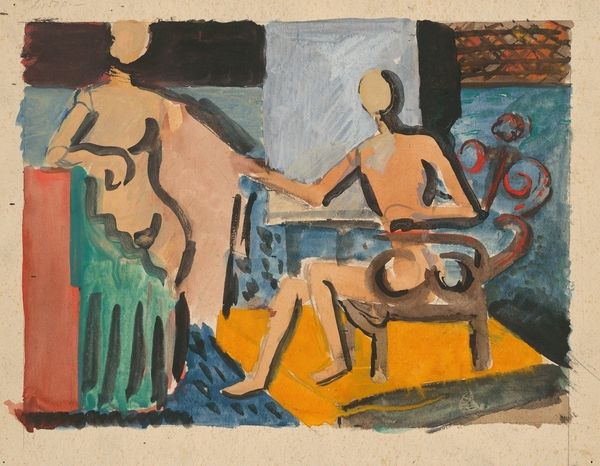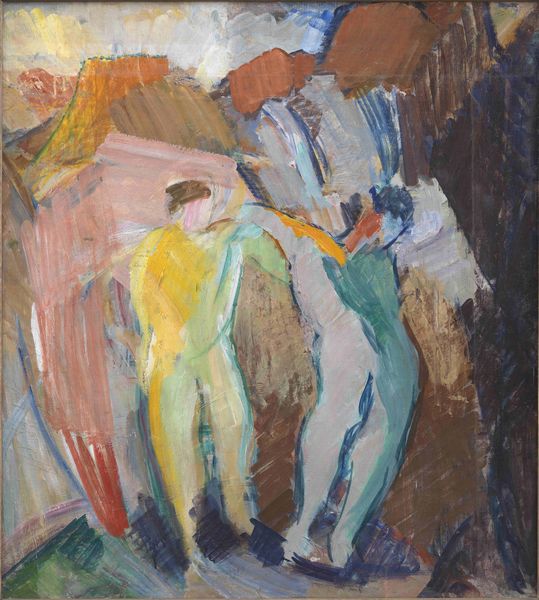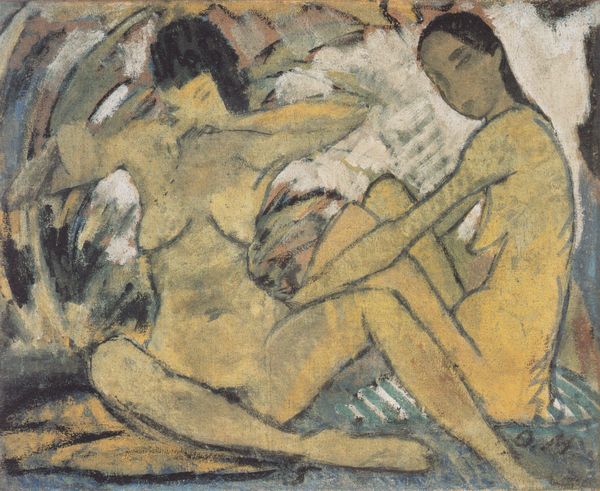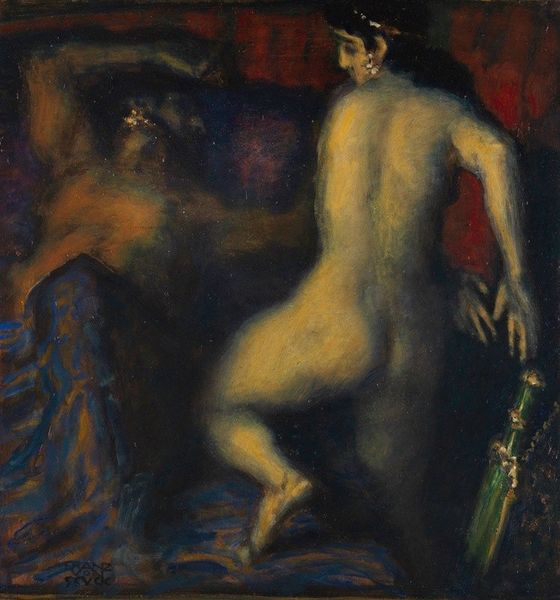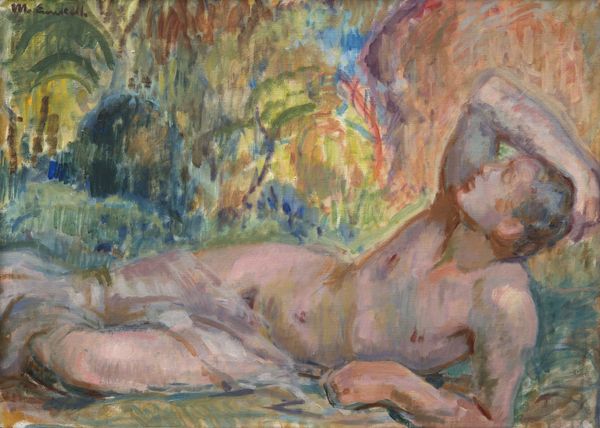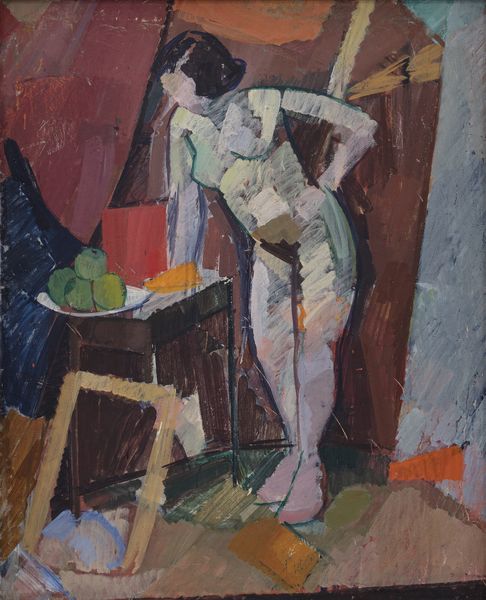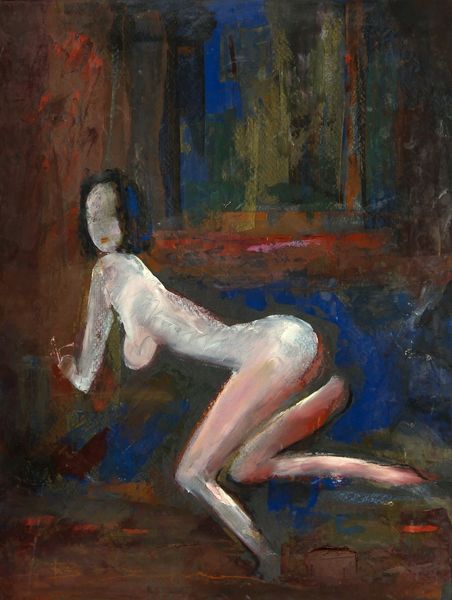
painting, watercolor
#
water colours
#
painting
#
figuration
#
watercolor
#
genre-painting
#
nude
#
watercolor
Dimensions: 65 cm (height) x 50 cm (width) (Netto)
Curator: Oh, there's a fascinating piece here, Karl Isakson’s "Josef and Potifar's Wife" from 1924. It's currently residing here at the SMK, rendered in watercolor. What strikes you first about this portrayal of a classic tale? Editor: Honestly? The sheer economy of means. The watercolor feels almost…brutalist. It's so pared back. You can almost smell the paper pulp and imagine the artist's swift hand laying down these washes. Curator: Indeed, it possesses an unvarnished quality. There's this immediate sense of the struggle, not just of the characters but within Isakson’s technique itself. Look how the bodies are just barely there, suggestions in ochre and muted tones, wrestling with… well, desire, betrayal, duty. Editor: Right. Desire becomes a form of labor here, both hers to express and his to deflect. The pigments, almost translucent, also underscore how insubstantial such power dynamics truly are; they are socially manufactured, so fragile. And watercolor! So bourgeois! Such tension… Curator: Precisely! The biblical narrative, reduced to these raw, almost child-like forms. One almost feels a strange sympathy for Potifar's Wife. There is a sort of rawness. See how Joseph almost merges with that dominating earthy red background – it gives this sensation that maybe they're both stuck in something larger, maybe societal expectations, duty or their position within class structures. Editor: You nailed it! Consider the paper itself – a costly resource even then – a canvas for depicting these power struggles. Labor is implied, in producing and depicting class narratives and perhaps even mocking it from the safe remove. The very choice of medium invites a deeper reflection, the quietness of it betrays the underlying violence and struggle for the characters on display. Curator: Absolutely. A violence subtly simmering, visible in the stark contrasts and the watery medium doing its own type of dance across the fiber. Thanks, Karl; that look at materiality certainly gives one fresh eyes. Editor: Likewise! And a bit more respect for the often ignored stories woven through materials themselves. It’s these small moments, of friction that open us to greater understandings.
Comments
No comments
Be the first to comment and join the conversation on the ultimate creative platform.

